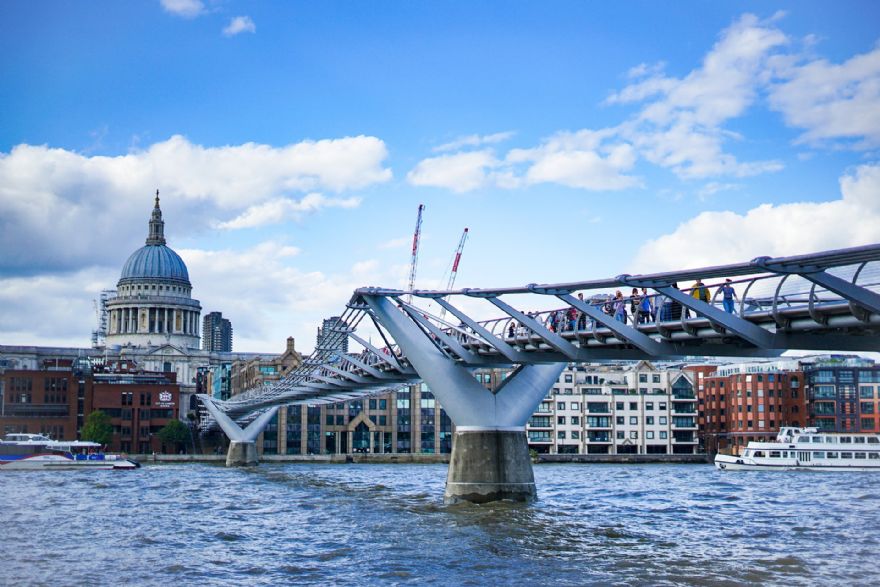 Pic: Millenium Bridge
Pic: Millenium BridgeAn international team of engineers and mathematicians, led by
Georgia State University in the USA and the
University of Bristol, has dispelled previous theories around why London’s Millennium Bridge moves from side-to-side when being crossed by large numbers of pedestrians.
One of the most important mathematical and physical theories of the last 20 years has been ‘spontaneous emergence of synchronous behaviour from incoherent agents’, with one of the the most commonly used examples being that of the ‘pedestrian-induced instability’ on the opening day of the London Millennium Bridge.
It was believed that once the bridge became filled with sufficiently many people, they ‘spontaneously and involuntarily started to co-ordinate their behaviour’; and when the frequency at which they made their footsteps became ‘locked-in’ to the natural frequency of the bridge there was a scary sideways swaying of the bridge.
This was thought to be a brand-new phenomenon, and a complete surprise to bridge designers who had previous believed that such large bridge oscillations would only occur if soldiers were to march in step, and that uncoordinated pedestrians were not a worry.
However, in this new research published in the journal
Nature Communications, the team finally dispelled this ‘synchronisation myth, having found that many other bridges have exhibited large-amplitude lateral oscillations when carrying large crowds of people — and with little or no evidence of footstep synchronisation. They concluded that the only explanation that is consistent with all evidence is that in trying not to fall over, the pedestrians walking randomly provide ‘negative damping’ — a positive feedback effect where energy is transferred from pedestrian wobbling into bridge motion, with any synchronisation observed typically being a consequence of, rather than a cause of, the bridge motion.
Professor John Macdonald from Bristol University’s Department of Civil Engineering, said: “It wasn’t the form of the London Millennium Bridge that caused the problem. These large oscillations can occur on virtually any long bridge when carrying a sufficiently large crowd. It turns out that the forces from many random left and right footsteps do not cancel out, but positive feedback leads to the vibrations getting out of hand.”
Following this research the team hope to further investigate the biomechanics of the mechanism in more detail at the individual level and to consider the crowd behaviour, including interactions between pedestrians in the crowd.
They also want to address vertical human-induced vibrations of structures in a similar way. These investigations will require further mathematical modelling and experiments, both in the laboratory and on real bridges. The aim will be to quantify the effect in a wide range of conditions, leading to safer, yet efficient, guidance for bridge design.